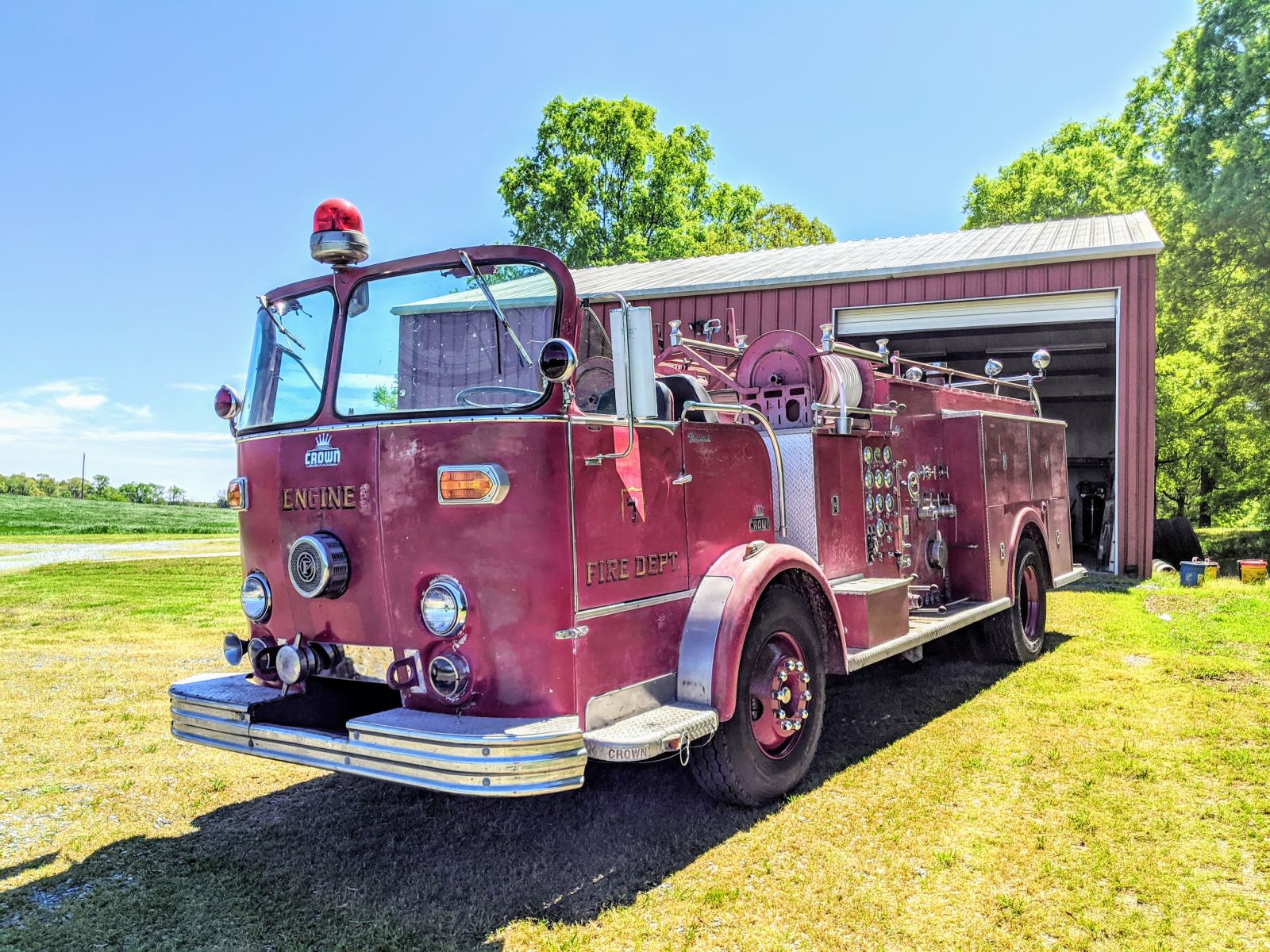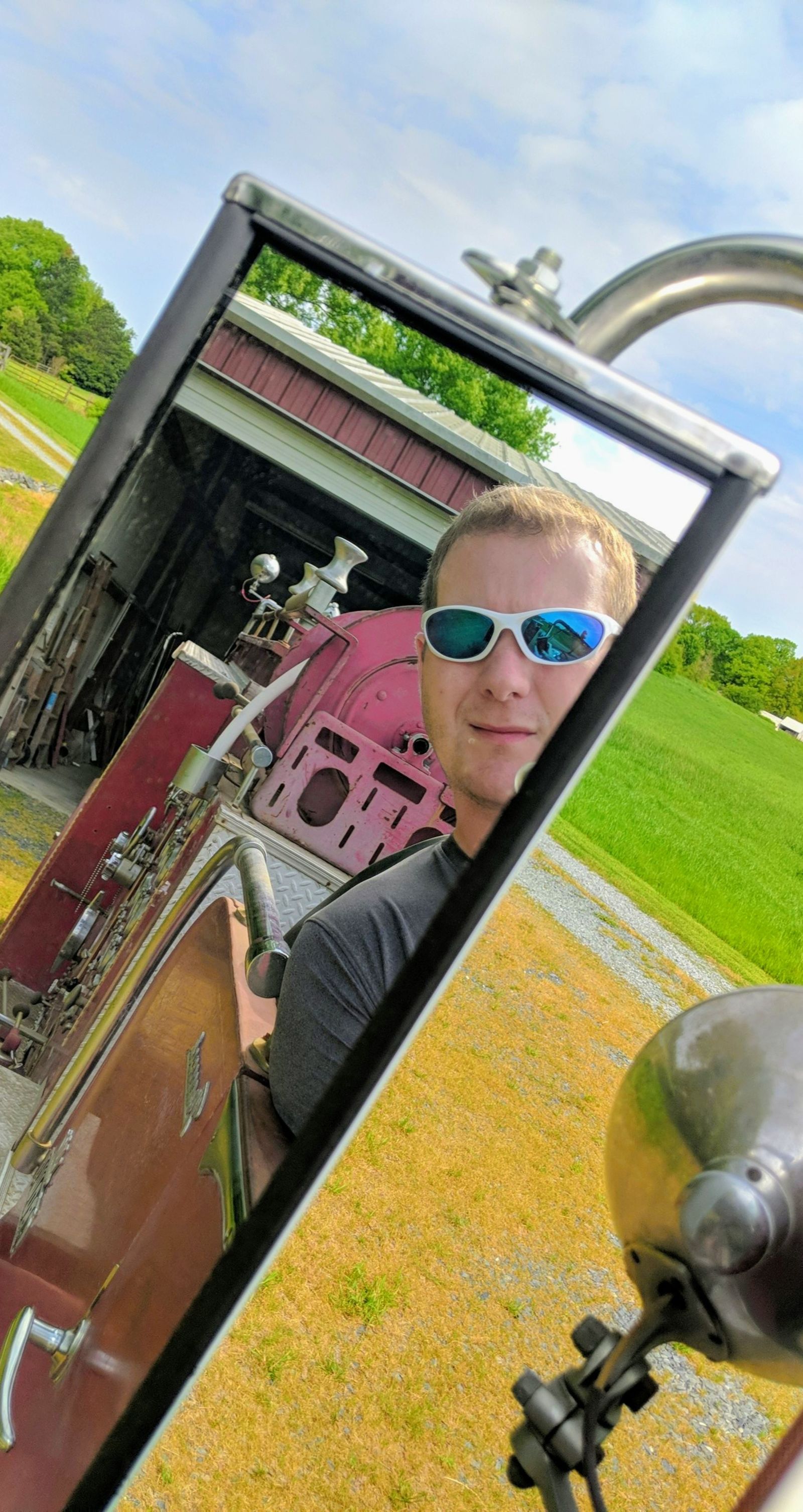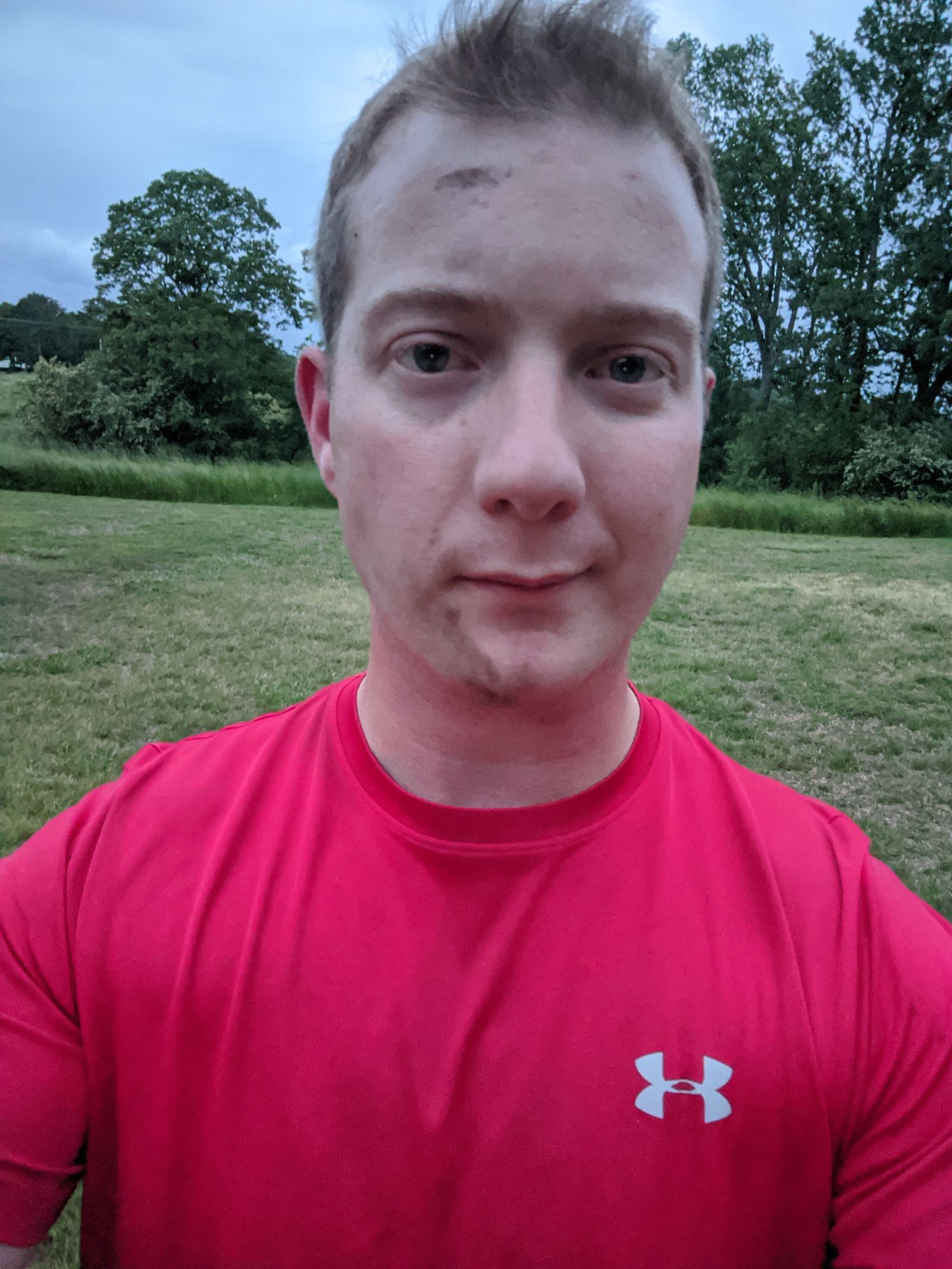Video link added of cold start and first 3 gears.

My parents bought a 1966 Crown Firecoach approximately 10 years ago. My father had always wanted one. It mostly sat (not legal to drive) in the garage for the majority of that time. We (mostly my dad) started tinkering with it. My brother, father and I started replacing hoses, lines, belts etc. Changed out filters and such. But again, it came in small, short bursts.
This last year, we got it registered in NC and road safe. New tires, rims, seats, etc. Finally, it was time to get her out on the open road and see what she could do. These trucks tended to be overbuilt and over engineered from the factory. That mostly meant that even after 50 plus years of service (and, in large part, sitting unused) it still ran and drove like a champ. Tight, smooth, stable. This, compared to our other fire truck (1965 Seagrave) that has necessitated many modifications over the years to force it to have better road manners. That is, until the Crown started eating fuel filters at an alarming rate (15-20 miles of driving). The fuel tank was rotted and needed to be replaced/relocated. More on that when we get the parts to fix it.

But, before the fuel tank started to self destruct, we did get a few drives in. What you have to understand about this vehicle is that it is a 4 speed (with overdrive). It has a clutch, 4 forward gears and an overdrive. Reverse too. Good, right? The Cummins inline 6 diesel in this thing is a torque monster. Even at low RPM. Getting into first gear is effortless and requires zero throttle input to achieve. Getting into first or reverse requires the clutch. For every other gear, the clutch is useless in achieving a gear and can actually hamper your efforts. So, rev matching/road speed matching is the only way. This was all new to me.
Video of Cold Start and first 3 gears
In a modern manual transmission, there are clearly defined gates for your gears. The clutch is useful. The shifts can be made accurately and smoothly with a short period of getting to know one another. The Crown 1-2 shift was relatively easy to catch. Slowly lift off the throttle will allow you to disengage gear 1 and while the RPM’s are coming down, you can catch 2. 3rd gear was relatively elusive. It should be up, over to the right and up. But there is no hard (or even soft) gate to let you know you’ve found 3rd. It takes some finesse, and a few curse words from both you and the people behind you on the road you’re inevitably holding up. 4th and overdrive are easy peasy.
I had never driven a vehicle that was both cantankerous, fun and terrifying all at the same time. My parents have a long 1000 ft long driveway. That’s important information. I didn’t just jump in this truck one day and take it out on the road. I spent multiple weekends shifting through and catching (or more often failing to catch) the gears. Then reversing down the driveway and starting the process all over. I eventually got confident and said the obligatory “fuck it” and took it out on the open road. I got it around a 10 ish mile block all by myself, no stalling, no issues. I missed a few gears but was able to recover. I had never felt so good. I needed more. More will come when the fuel system issues are resolved. Soon.

So, what do you do when you can’t drive a fire truck? You find out if it can pump water. That is, after all, a primary and semi-important function of a fire truck, right? Right. Remember the part about it sitting for many years? Everything had to be tested. The first, how do we get this truck into pump mode? Every truck has a similar system but this was clearly different than our Seagrave. My father and I tried taking the truck out of “road” and placing it in “pump” with a lever on the pump panel. This required the transmission be in neutral and using the clutch. We felt and heard something engage. Surely it wouldn’t be that easy to engage the pump? My father told me to place it into gear. That failed miserably with a shudder and a stall. We figured out that, in fact, all we needed was the first step. With water in the leaking tank, we set out to build pressure. That we did. The pump was spinning and we knew it was functional enough to move water.
But the tank leaked. Quite a bit. So, last night, my father and I placed a metal plate at the bottom of the tank to replace the sump system that was part of the “tank to pump” system. Tank to pump just dumps water from the water tank to the pump. Most of the bolts/washers and a metric ton of silicone installed without much fanfare. However, there was one that was surrounded by the frame, rear leaf spring suspension, and some piping for the pump. It made it near impossible to get this nut onto the stud. There was lots of dropping, slipping, cursing and attempts at any other angle that may function better. Finally, I was able to secure the nut and fasten it down. I needed 3 hands and someone to hold a light. I had neither. But, the plate was in place. We had won this battle.

I have never been much of a grease-monkey. But these last few months and years of consistent repairs and upgrades have strengthened an already strong relationship with my family and forged a man and machine bond that I had never experienced. And now, it’s all I can think about. We still need to address some valves, drafting capability (my father replaced the primer so that is a good start) and other little things. But we know it holds water and pumps it out.

To be honest, my parents purchased this truck and have made all the cash investments into it thus far. However, due to my neophyte wrenching, elbow grease and drive time, I will forever claim it to be just as much mine as theirs. I feel connected to it in a way that I have never felt with any other vehicle. I’ve both owned and driven many types of vehicles that most would consider more exciting than an old fire truck.. But there is something personal about this one. Something special. The family bond, the learning curve, failures and triumphs over cantankerous components. There is a thirst for more. More wrenching, more drive time, more water throwing. More.
As more happens, I will detail it here on Oppo. Thank you for reading. There are likely details that are missing but at 1217 words, I think you get the idea.